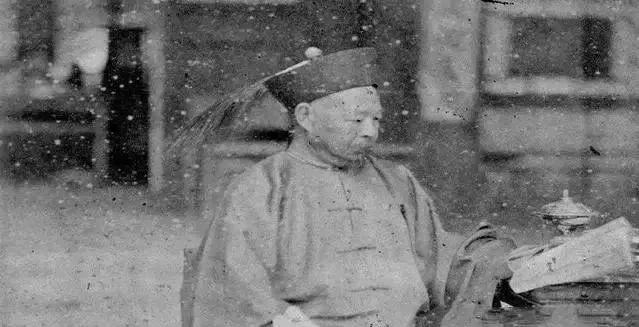Among the Han courtiers of the late Qing Dynasty, Zuo Zongtang can be regarded as one of the more famous. His main known deed is that he led troops to recover Xinjiang and avoided Xinjiang's independence. Compared with some of the main well-known activities in the life of Li Hongzhang of Zeng Guofan, most of which were aimed at consolidating the rule of the Qing Dynasty, Zuo Zongtang's approach has an extra layer of historical significance.
The development of modern photographic technology has enabled many famous figures to leave photos for posterity, and people today can also get a glimpse of the true appearance of those well-known figures in history. Although the photos taken in the late Qing Dynasty are rarely colored, and the imaging quality of the black and white photos is also unsatisfactory, it looks blurry. However, compared with the portraits drawn by the painter, the photos taken retain more details and have a more sense of historical age. Zuo Zongtang may not like to take pictures, or may not be in the diplomatic scene, leaving fewer photos.

From its preserved photos, it is okay to find three shots, and after AI coloring processing, Zuo Zongtang's character image is more vivid. There is indeed a certain origin in how those three photos came about. In the first photo, Zuo Zongtang sits on a chair in his official uniform and reads a book, showing his usual appearance when reading a book. The photograph was taken in 1875, when he was the governor of Shaanxi and Gansu, and was later appointed minister of Chincha, leading an army to attack Agubai in Xinjiang and recovering Xinjiang. There is also a photo taken at the same time, Zuo Zongtang is sitting precariously, facing the camera.
The two photographs were preserved by his special photographs, which were taken by a Russian named Julian A Sosnovsky. He also planned to take advantage of the opportunity to spy on military intelligence when he went to China to take pictures. In the late Qing Dynasty, some foreign photographers came to China to take photos or films, some of them were photography enthusiasts, they just wanted to record some typical scenes of the Qing Dynasty, understand people's lives, and some were spies who took the opportunity to spy on intelligence. Julian A Sosnovsky brought nine men to China for an expedition in 1874, during which time the expedition took about 200 photographs and obtained the information they wanted.
The government of the late Qing Dynasty was weak and incompetent, and it was not surprising that foreigners inquired about intelligence, and it was precisely because those people took the opportunity to take pictures of some famous people that later generations had the opportunity to see the faces of those historical figures. Zuo Zongtang also has a photo taken in 1881, in which Zuo Zongtang sits with Prince Shuo for a group photo. Zuo Zongtang was going to serve as the governor of Liangjiang, and Yi Zhen invited him to the palace to serve wine and food, during which he took the photo. After the restoration and coloring, the character image is indeed more vivid.
Zuo Zongtang was one of the more heavily used Han ministers appointed by the Qing government, and among the other heavily used Han ministers, in addition to Li Hongzhang and Zeng Guofan, Zhang Zhidong can be regarded as a typical example, and he is known for founding the Hanyang Arsenal, producing many guns, and playing an important role in the later revolutionary war. Unlike Li Hongzhang, who signed some treaties with the great powers on behalf of the Qing government, which was reviled by people, Zuo Zongtang's reputation is not much tainted. His feat of recovering Xinjiang deserves the praise of future generations. If he had not led the army to retake Xinjiang, perhaps China's territory would have been reduced by a large piece of territory, and it seems that it would lose its integrity.